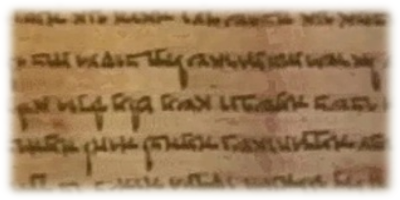When we look at words, such as are written here, we acknowledge that each letter represents a sound and a word is a segment of these letters and represent a concept. For instance, the letter F represents the “f” sound, the letter L the “l” sound and the letter Y the “y” or “i” sound. When these letters are put together, they form the word “FLY,” which conveys a concept, either an insect that flies or the act of flying.
But what if in ancient times, writing was the opposite, the letters represented a concept and the word represented a sound? This would be similar to how we use acronyms such as FYI, FBI and ABC. In each of these, it is the letter that conveys the concept, such as “Federal,” “Bureau” and “Investigation,” and the word FBI only represents sounds. Laird Scranton proposed this idea for Egyptian Hieroglyphs in the documentary The Pyramid Code. If his theory is correct, could this also be true for the Ancient Hebrew language.
Let’s take the Hebrew letter aleph, which in Modern Hebrew is written as א, but in ancient times it was a picture of an ox head— . Linguists today, admit that in ancient times this letter may have represented the concept of an “ox,” but insist that in Biblical times this knowledge was lost and it only represented the “a” sound. The Modern Hebrew letter ב represents the “b” sound, but in ancient times this letter was a picture of a tent, or home—
. Linguists today, admit that in ancient times this letter may have represented the concept of an “ox,” but insist that in Biblical times this knowledge was lost and it only represented the “a” sound. The Modern Hebrew letter ב represents the “b” sound, but in ancient times this letter was a picture of a tent, or home— . If we put these two letters together, we have the word אב, which has the sound of “ab,” but if we read the letters as concepts, then we have “strength of the house,” which would then be the Ancient Hebrew definition of a “father.”
. If we put these two letters together, we have the word אב, which has the sound of “ab,” but if we read the letters as concepts, then we have “strength of the house,” which would then be the Ancient Hebrew definition of a “father.”
While Egyptian hieroglyphs have thousands of these “letters,” Hebrew only has twenty-two and you can’t form too many concepts out of these few letters. But what if, these twenty-two letters were combined to create new sounds and new concepts? For instance, the letters א, meaning “strength,” and ל, meaning “authority,” each have a sound and a meaning, but when combined, they create a new meaning—“strong one of authority” (this word is often translated as “God” or “god”), as well as a new sound, el. The Ancient Hebrew Research Center (AHRC) calls these two-letter words “parent roots” and with these parent roots there are 484 possible combinations (22 x 22) of new sounds and concepts.
Now, with these parent roots, additional letters could be added to form even more new sounds and meanings. When another letter is added to the parent root, such as the letter ף, which has the sound p and the meaning “open mouth” (the original picture of this letter), we have אל (el) plus ף (p), which we can interpret to mean “The strong one of authority” plus “opens the mouth.” The meaning of the Hebrew word אלף (elep[h]) is “to learn,” which is what you get when the “the strong one of authority opens his mouth and speaks.” For another example, the Hebrew word שבת, which we usually transliterate as "Shabbat" or "Sabbath," is the parent root שב meaning "return" and the letter ת meaning "covenant"--Return to the covenant.
In summary, modern linguistics assumes a sound for each letter and a meaning for each word, but it is possible that in ancient times, there was a meaning for each letter and a sound for each word. But the real problem is that our worldview, which effects language, is vastly different from the Ancient Hebrews and reconstructing the sounds and meanings of these “letters” and “words” is very difficult.

Like what you’re discovering? Continue the journey from Bible reader to translator.
|







